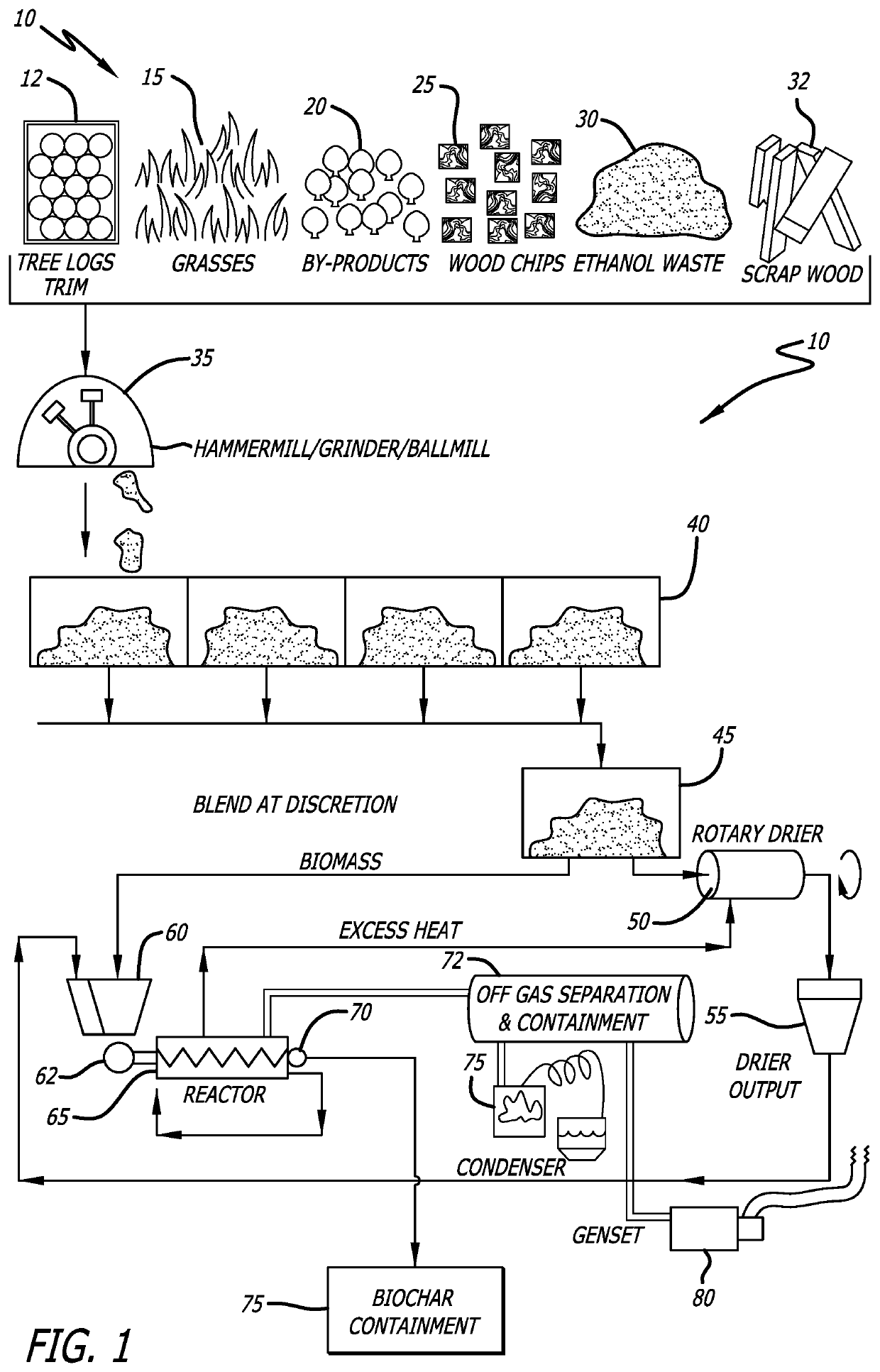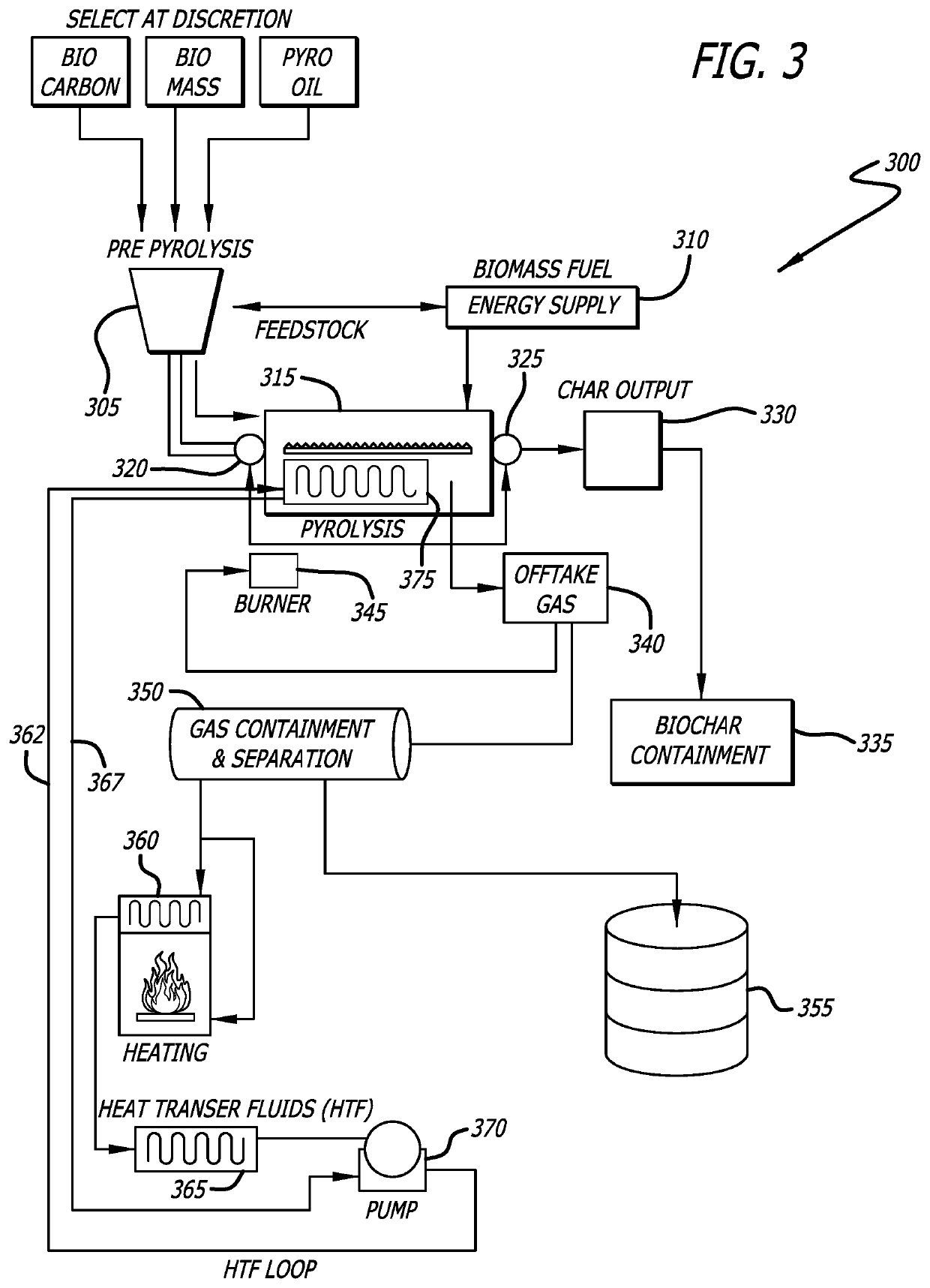However, as is common knowledge, the in-ground stores of
petroleum based products are rapidly declining, and experts predict that new discoveries are not occurring frequently enough to offset the rapid drawdown of currently known reserves.
Furthermore, use of these non-renewable resources are believed to produce climate changes and more immediately identified local environmental effects commonly associated with increased
fouling of air and water and are generally considered
pollution inducing and having a negative effect on the environment.
While these energy sources are considered “clean” or “green” because they are renewable, relatively non-polluting, and are thought to produce a minimal to no
carbon footprint or reduced emission profile on the environment from their use, they each have drawbacks due to location, convertibility, space, and wind and water availability.
Essentially, these renewable resources are not always found in sufficient commercially available amounts in the locations where they are needed to enable their substitution for all commercially used non-renewable resources.
Coal is another source of energy that is widely used, but which is neither clean nor renewable.
While advancements in technology have made the use of
coal cleaner with less residual ash and lower atmospheric emission,
coal cannot be used in all applications, particularly where use of
liquid fuel is advantageous.
Although
coal can be processed into a water-based
slurry, such a
slurry cannot be used where a low
water content fuel is needed to avoid emission of certain oxides and / or other pollutants, or where the water will cause damage to the equipment being powered by the
combustion of the
coal slurry.
Furthermore,
coal slurry or fluid dispersions of coal still do not overcome the detrimental environmental effects caused by the
combustion of coal for heat or energy generation.
The type of coal typically used today, called
steam coal, or sub-
bituminous coal, is not pure, and includes a mixture of harmful
heavy metals such as mercury and lead, toxins or other minerals such as
sulfur that, when combusted, tend to adversely affect the
combustion equipment and at the same time disperse into the air and water resulting in potentially harmful effects on people and the environment.
However, unless these materials are handled in a particular manner which includes their being dried and processed bundled, chipped, pelletized, cubed, or baled or
heat treated, such unprocessed natural
plant products, commonly called “biomass,” are difficult to use as fuel.
The unprocessed biomass is typically either too wet, too cumbersome or costly to
handle and transport, too prone to
decomposition or rot when in a
stockpile, too bulky and difficult to feed into conventional heat or energy generation equipment, or are simply too full of non-combustible, non-
natural fiber materials, or contaminants such as
metal, plastic, sand, gravel,
dirt or other ash causing products to effectively bring them from the field, farm or forest directly to a heat or power generating
plant for use.
All
solid fuels power plants, including coal and biomass power plants are typically designed, engineered and built to use one type or class of fuel and are not easily reconfigured to change from one
fuel type to another.
For example,
coal fired power plants cannot burn biomass without expensive and major
engineering changes in their operation systems, usually rendering them unable to revert to coal once the changes to permit
biomass combustion have been made.
Biomass power plants using certain types of woody based
fiber including wood chips in a specifically designed boiler
system cannot be fed into the
system alongside curbside garden variety aggregated biomass or
crop generated by-products without special handling and pre-
processing of the
alternative fuels.
Furthermore these natural cellulosic materials are comprised of a variety of differing cellular mechanical structures and chemical bonds which create their own sets of problems with respect to reduction of
moisture content, management of
size reduction or alteration, and particle production and handling to permit suitable commercial feeding as a fuel into conventional biomass heat or energy generating equipment.
The handling of biomass is problematic, and typically requires that a dedicated biomass generation
plant be specially engineered to use certain specific types of
biomass fuels.
As discussed above, the biomass
fuel type used in such a generation plant is typically not interchangeable with another type of biomass fuel.
Biomass can be aggregated, chipped or chopped, ground up, dried and burned, but not all biomass can be mixed and processed homogenously, dried and burned with the same equipment and in the same manner.
In addition, raw, unprocessed biomass type fuels (even if they have undergone a preliminary process, such as chipping or shredding) are not easily
convertible or reducible into smaller more manageable and uniformly sized particles due to their inherent diverse ligno-cellulosic chemical and mechanical cellular bonds.
However, as society focuses its concern on the environment and air and
water quality, it has been recognized that the combustion of conventional biomass, even if plainly dried and burned, releases chemical components such as volatile organic compounds (VOC's) and particulate matter generated during the
combustion process that tends to foul the air and fill it with
smoke, dust and ash.
Conventional biomass
fiber fueled plants have become very costly and
time consuming to build because they must be engineered and designed to consume biomass of a certain nature and to mitigate particulate and
volatile organic compound emissions resulting from the burning of biomass.
However, it is well known that nighttime energy is less valuable than peak
daytime energy.
Accordingly, the economics of biomass power plants are problematic because they do not fit all situations of affordable biomass consumption or timely electrical demand.
In some circumstances, the biomass
fuel supply is not even available year round, but is seasonally harvested, grown or aggregated.
One problem that has not yet been overcome simply by
air drying or evaporative heating of the biomass until the biomass has a
moisture content considered dry enough to combust, for example, under five (5) percent but generally less than 25%, is that all unprocessed and not specifically heat-treated biomass is hydroscopic and hydrophilic.
Moreover, biomass dispersed into
moisture laden fluids will absorb fluid and may prevent the biomass from being a suitable heat or energy generating fuel.
Even when the biomass is air or evaporative dried mechanically or otherwise,
lignin and
cellulose fiber bound together in the dry biomass are hydrophilic and that allows the biomass to wick up and hold moisture thereby negatively impacting the combustion capability of the fuel product.
Furthermore, and most significantly, the mechanically and chemically bound
lignin and
cellulose in biomass are not easily broken down sufficiently even through
air drying and evaporative mechanical
drying to allow the biomass to be cost effectively and commercially reduced in size and consistent character, such as, for example, into a finely ground
powder or even into minute micro or nano particulate sizes amenable to forming a
slurry, suspension or liquid solution or a colloidal dispersion.
Not all
torrefaction technologies are suitable and not all automatically result in a desirable output product.
Leaving torrefied
biochar in an unpelletized or uncubed state may allow undesirable dust to float in the air, which may create a nuisance storage condition.
Excessive dust from carbonized product can create an unwanted accumulation of torrefied
dust particles which in a confined storage space may result in a combustible or explosive dust-air mixture.
However, the
biochar product of the heat treatment processes described above is, without further
processing and cautious handling, difficult to commercially bulk transport and store, dangerous to
stockpile or deliver as a
powder without causing a risk of airborne dust
contamination or simply dangerous concentrations becoming an easily ignitable or even explosive mist, and difficult if not impossible to control and feed in a measured and controlled way into a variety of commonly used heat and energy generating equipment.
It is also undesirable in a floating loose dust form with ordinary bulk non-processed
biomass fuels used in dedicated biomass heat or energy generation equipment.
However,
pelletizing and cubing the biochar limits its use to equipment and feed streams that are designed only for such dry feedstock handling use.
Conventional liquid fuels today made from biomass are distilled, chemically cracked, fractionated, and refined through a number of highly complicated, expensive and critically engineered processes that destroy or remove the
solid component from the fuel, extract sugars and / or other compounds, and in the end create a bio-oil or bio-
gasoline or
alcohol based fuel.
No matter how these liquid biomass derived fuels are made, they are not solutions, liquid dispersions, or colloids because they have no particulate content in the final product.
Consequently, the conversion of these waste by-products has been complicated, problematic, and generally not cost effective.
 Login to View More
Login to View More  Login to View More
Login to View More 


